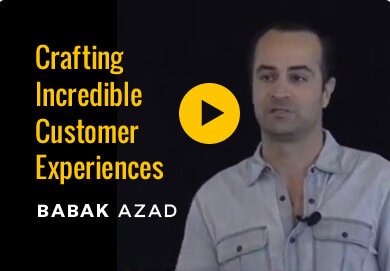
Online and TV marketers remind me a bit of rocks stars and movies stars – many wish they were the other. Movie stars don’t get the immediate rush from a crowd screaming their names like rock stars do when they’re on-stage while rock stars often live a life on the road versus movie stars who are gone for specific periods of time (and TV stars who rarely have to travel). A few years ago, I would have said they were stuck, but that’s changing a bit – at least for rock stars trying their hands at movies (not sure I recollect too many movie stars going the other direction).
As for online and TV marketers, it’s not a simple task, but growing into the other’s domain is possible and seemingly an aspiration for the other. As it’s gotten cheaper and cheaper to get a business going online, there are an increasing number of online-only companies that are exploring TV media.
Below is a list of some of what I’d tell them:
1. The scale and exposure of TV is still pretty remarkable
Sure, videos, memes and post go viral online, but there is still this sense that you can get to a different sort of scale on TV than online. And TV still provides a different sense of fame and exposure that is pretty impressive.
2. The Demise of TV has been grossly overstated
Everyone keeps talking about TV going away, people unplugging, Hulu/Netflix/Amazon taking over. But here’s the thing, there are still a ton of people watching TV. The satellite and cable subscriber numbers are still pretty health: DirecTV – 20MM; Dish – 14MM; Comcast – 22MM; Time Warner – 11M. TV isn’t going anywhere anytime soon. There’s still just way too much you can push thru satellite and cable than you can’t on an Internet connection, let alone wifi.
3. TV media is not as expensive as you think
I once spoke to a group of digital marketers and mentioned that we can test a new show for $25,000 of media. I was immediately asked if that was per airing and then how many airings we ran. When in actuality that was the total test. I never realized just how much confusion there was on TV media – yes, some airings are $70K, but those are by far the exceptions. Airings can vary from $25 to several thousand dollars, and so for $25K, you can get a good read assuming you pick the right media.
4. TV Video is different than online video
This may or may not be obvious, but it bears mentioning. For starters, TV viewers expect a certain type of quality while online viewers, especially those on YouTube, have come to tolerate and almost expect lower quality video. Not to mention the pace of content has to be different. Online, if someone doesn’t like your content, something else is a quick click away. Yes, you can easily click the remote on your TV, but I think we have all experienced much less patience with poor online content than with TV. At the same time, digital marketers with experience using online video are used to telling people a story in a certain way; importantly, everyone watching starts at the same place. Contrast that with TV where viewers may switch to a channel at entirely different times. So tactics such as pattern-interrupts are almost non-existent on TV (with the exception of this brilliant one this year, but that was only because Chevy knew most everyone was watching – https://www.youtube.com/watch?v=sVmHxm_hFLY ). Bottom line, make sure the content matches the media.
5. The pace of testing is different
By far one of the biggest differences between TV and online is just how much quicker you can test (pretty much anything) online while TV takes much more time – getting a master finalized, tapes made (more short-form is finally going digital), waiting for the airing, etc. As opposed to digital where you can literally get ads up within an hour or two of making the decision to do so.
6. You’re likely not a TV creative director so don’t behave like you are one
Many internet marketers are used to figuring things out themselves. It’s really quite impressive. But TV production is a different ballgame. And because of the implications on timing mentioned above, you have to take slightly better shots than you might ordinarily get away with online. Find good people to help you out.
7. Production is really hard
If you can’t drive response, the rest doesn’t matter. For reasons that I still don’t fully understand, the number of really good producers isn’t that big. These last 2 points may sound like you should then avoid TV. That’s not necessarily the case. But it all comes down to driving response. Just like if you can’t get someone to click on an ad, conversion rate doesn’t matter. The point here is while you can get away with something ugly and bare bones online, it’s a lot harder to do on TV. So you’re very likely going to end up needing a partner. Don’t expect that you can do it all on your own.
8. Understand the difference between short-form versus long-form
Not surprisingly, long-form (everyone says 30 minutes but in reality it’s 28:30) is more often used for products and offers that require more explanation and/or are higher-priced. Versus short-form (15 seconds to 5 mins) which has been better for lead-gen, trial offers, etc. And typically better for retail, though some of the housewares folks have used long-form to drive retail as well.
9. Be aware of how TV media is bought and managed
Both absolutely have a relationship component to how they are managed but short-form is more bought in a more fluid and liquid environment – you essentially put in a bid and if you have the highest price, you’ll air. It feels much more like a market economy. Long-form on the other hand is typically bought monthly and while you can pre-empt someone in a slot, it’s a lot harder and not nearly as real-time relative to short-form. Both are typically bought through agencies – on the long-form side, that’s more related to those monthly buys. Not too many marketers are willing to take that risk. And though not 100% necessarily on the short-form side, agencies can help with understanding the market environment, rates, etc. Plus, it’s important to know that there are essentially no self-service platforms, no analogues to a DSP/DMP, etc., so it’s just a lot to try to manage internally. Suffice to say that the TV industry hasn’t been nearly as fast-paced from a technology perspective as the digital world.
10. You can optimize yourself to $0 of spend if you manage it exactly the same way as you do online
Online is much more of a game of constant tweaking, moving, adjusting, trying new creative, new landing pages, etc. Not to say that you should stay in TV media when it’s not working, but a Tuesday 3am airing on ABC Family will likely behave differently than a Wednesday 3am airing on the same network – so while one might not work, the other may. And so you can’t be as knee-jerk to pulling media, not to mention you also can’t scale at the flip of a switch. But you absolutely can scale – again, these distinctions are about pace more than anything else.
11. You likely are not 1-and-done with your online tests, so don’t be that way with your TV testing
I’ve come across way too many digital marketers that say that they tried TV once, it didn’t work, and so they didn’t go back. I just don’t get this mentality because many thing onlines don’t work the first time around – testing and tweaking is just what the direct-response business is about.
12. And so, you should expect to fail the first time around
The implications are to plan both from a time and budget standpoint.
13. You need to hang out with new people
Just as online media has gotten more and more specialized – so much so that you almost need partners (or employees) for each media form, the same can be said for TV – whether it’s production folks, media agencies, networks, and call centers (we’ll get to the importance of the phone channel in a sec). Events like the ones the ERA (www.retailing.org) and the DRMA (http://www.responsemagazine.com/) put on are places to make those connections. (Full disclosure – I’m a Board member of the ERA.) And not surprisingly, the DRTV folks have a culture of their own. You’ll need to spend some time learning the lay of the land.
14. The phone channel as a response mechanism is really important
It’s good to see that more and more online marketers are adding phone numbers to their websites, not just for customer care, but for driving sales. (And let’s be very clear, a customer care agent is very different than a sales one.) Very few TV marketers are 100% drive-to-web. Part is a historical data one – you can have unique numbers per airing and so can know how each airing worked (at Beachbody, we managed roughly 20,000 toll-free numbers). It’s also the case that if you’re doing it right, the phone can be much more effective than online. 70% qualified lead conversion rate vs. 5% conversion rate. And upsell take-rates up to 50% higher. Not to mention some folks, particularly non-millennials, still like to speak to someone when ordering. Even when you factor in the cost of management and the agent’s time, you will almost always generate higher revenues from a call than an online visitor.
15. Claims
The good about TV is that it gives you exposure. The bad, at least for those pushing the limits, is the same thing. While the FTC is getting better at cracking down on sketchy claims online, they still acknowledge it’s a huge challenge and that online marketers can get away with claims that would never fly on TV. So you need to make sure to get some legal advice when it comes to your claims for TV spots. Not to mention, many networks have their own review processes to approve ads before they run.
16. Your offline and online teams need to be aligned and coordinated
We live in an age where everything affects everything. There are no silos. This point goes well beyond your offline and online media teams in your organizations and as they extend to external partners, agencies, etc.
17. Attribution
By far the biggest challenge in the DRTV world is understanding attribution – what TV spot drove which orders online. There are a few companies trying to help address this issue – mostly from an analytical perspective. As for myself, I think there is no 100% solution but some combination of analytics and a Shazam-type technology that will improve the murkiness. Unfortunately, promo codes and “/tvoffer” urls only work so well. Not to mention promo codes can have a detrimental effect to the extent the consumer forgets the code and thinks they truly need the code for the special offer; they may just move on to the next thing. All this to say that there are some ways to manage through this – for example, looking at a recent historical baseline pre and post a TV flight. And running enough media that a change in results would be more than just noise. Not perfect, but getting TV to work is worth it.
18. Just like everything else, there are not absolute truths
You kinda just have to pick smart partners, start with best practices, and then expect to test.
19. The fundamentals are the same
Having a good product makes things easier (and frankly, I can’t stand when people are knowingly and continually selling a crappy product), but certainly without good marketing, most of the time, it won’t matter. So just as with online, it’s about creating demand then driving traffic and closing the sale. As for the back-end after that initial lead capture or transaction, well, that’s an entirely different topic….
This list may look long and complex. But if you think about how many components there are to digital marketing, you’ll acknowledge that each media has to be learned and has its own nuances. TV is not like print advertising (no offense…) – it’s still huge and can be a huge source of traffic. You just need to know that there is more to it, as there is to everything.
In the next blog post, what the DRTV folks should think about when it comes to digital marketing
Please leave a comment below because I’d like to hear what you think.






Leave a Reply
You must be logged in to post a comment.